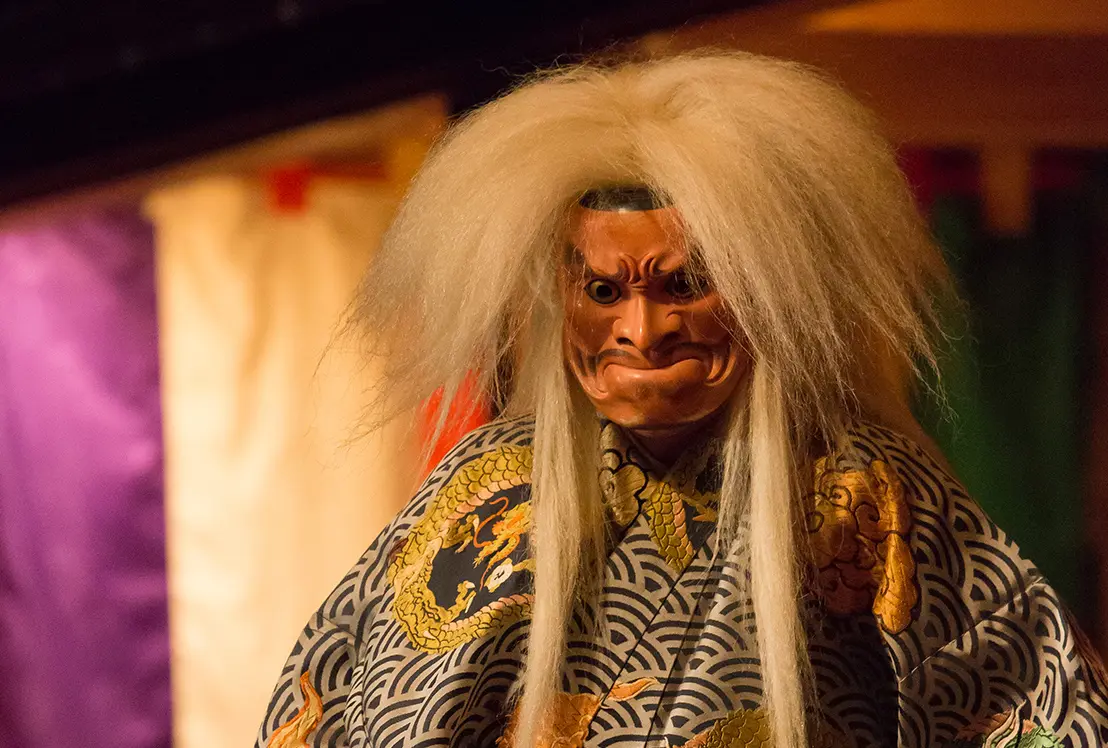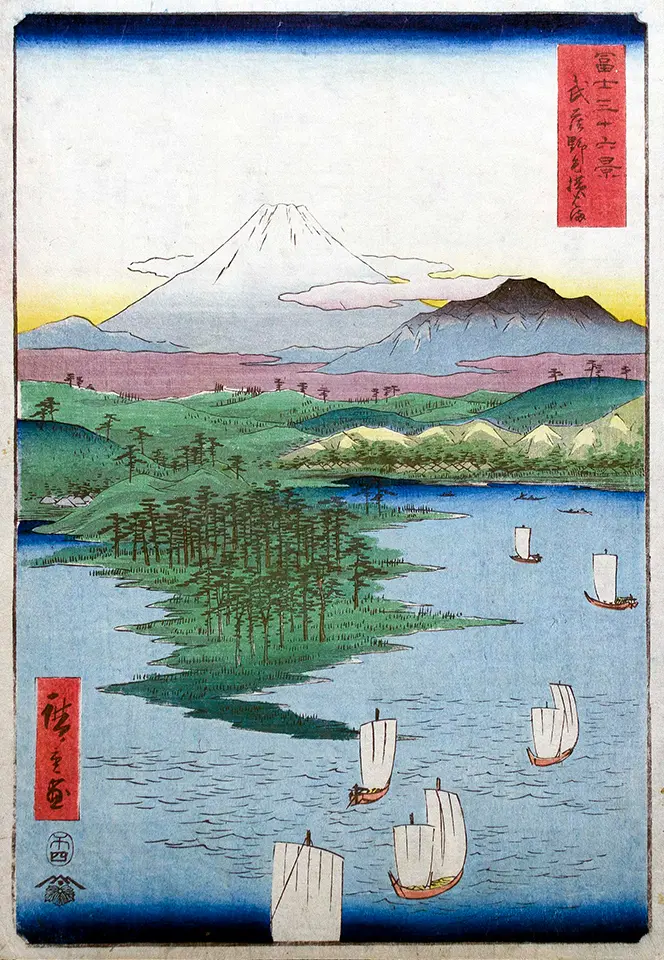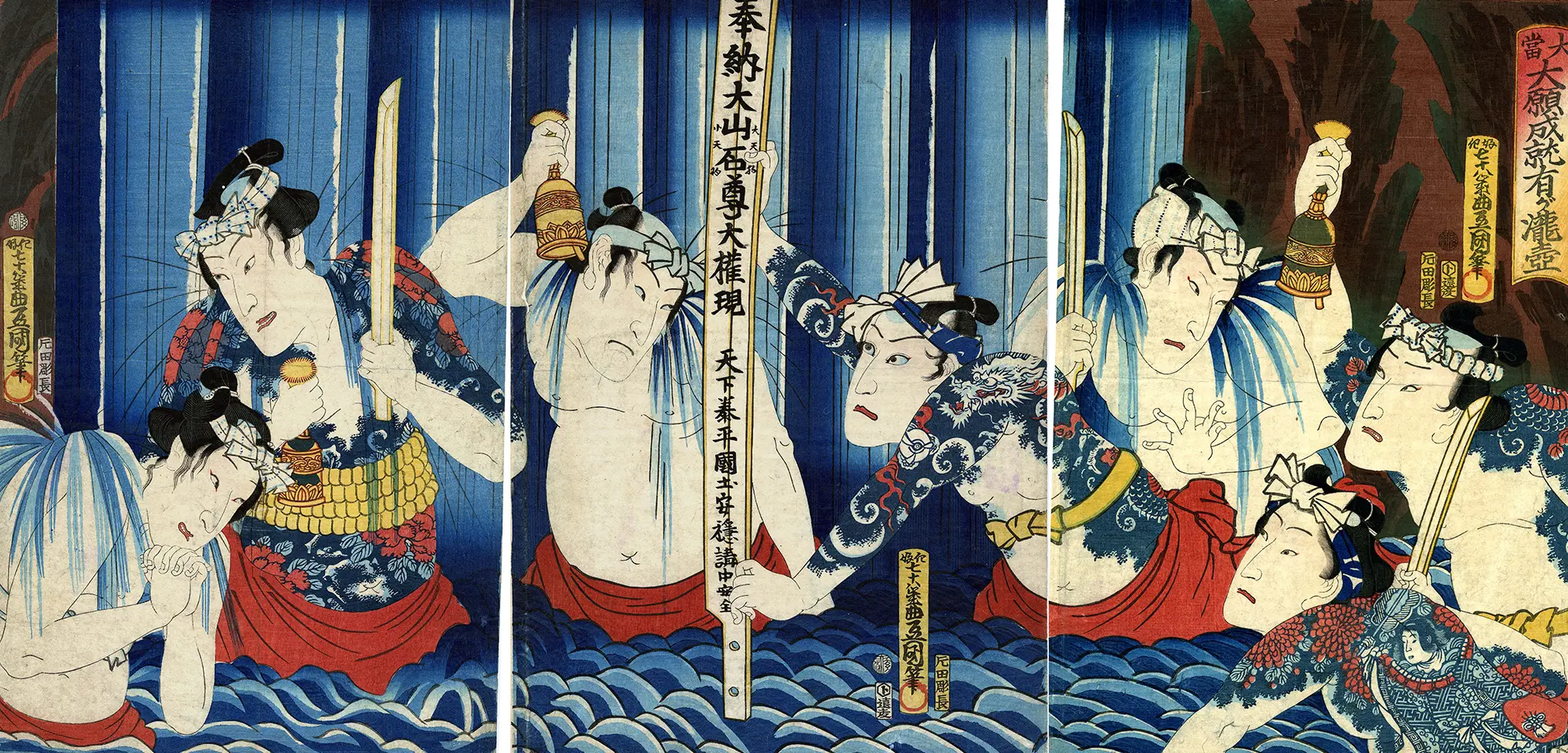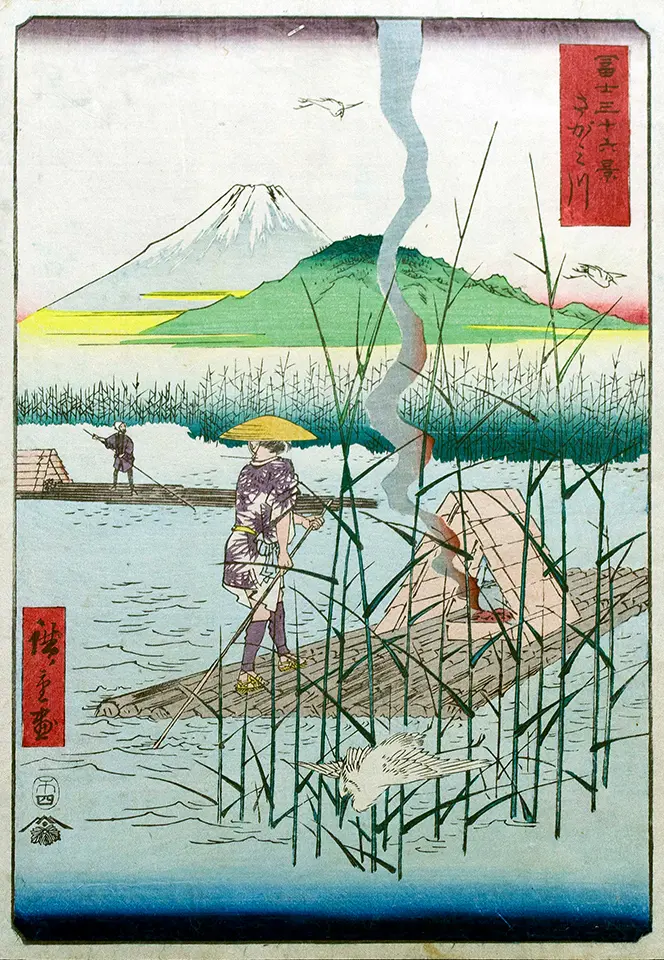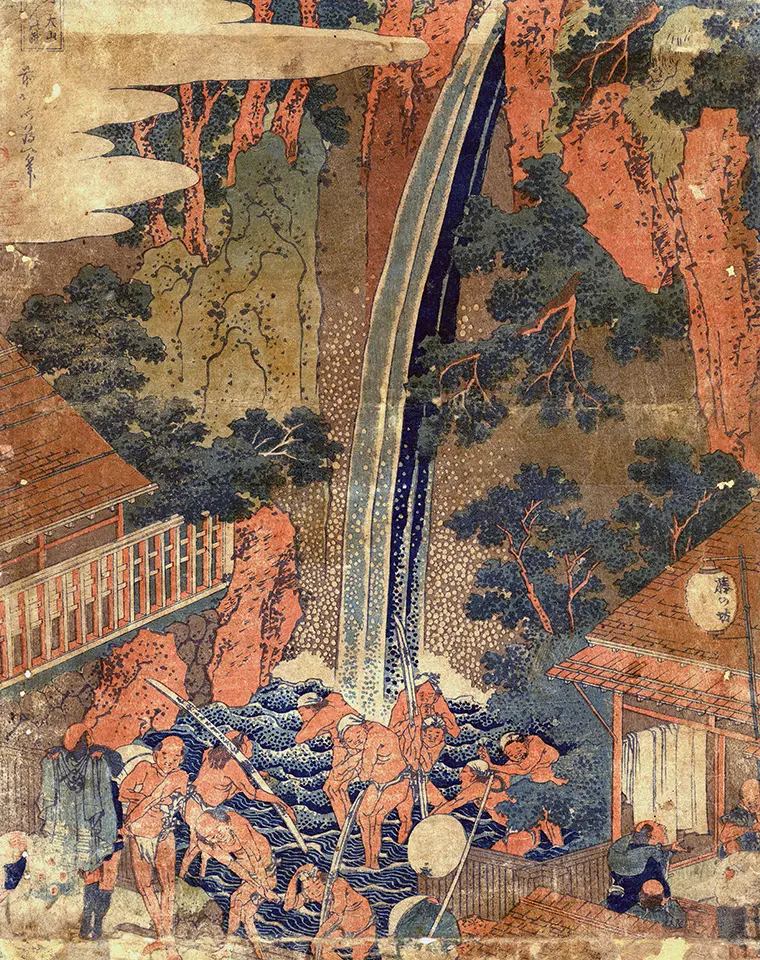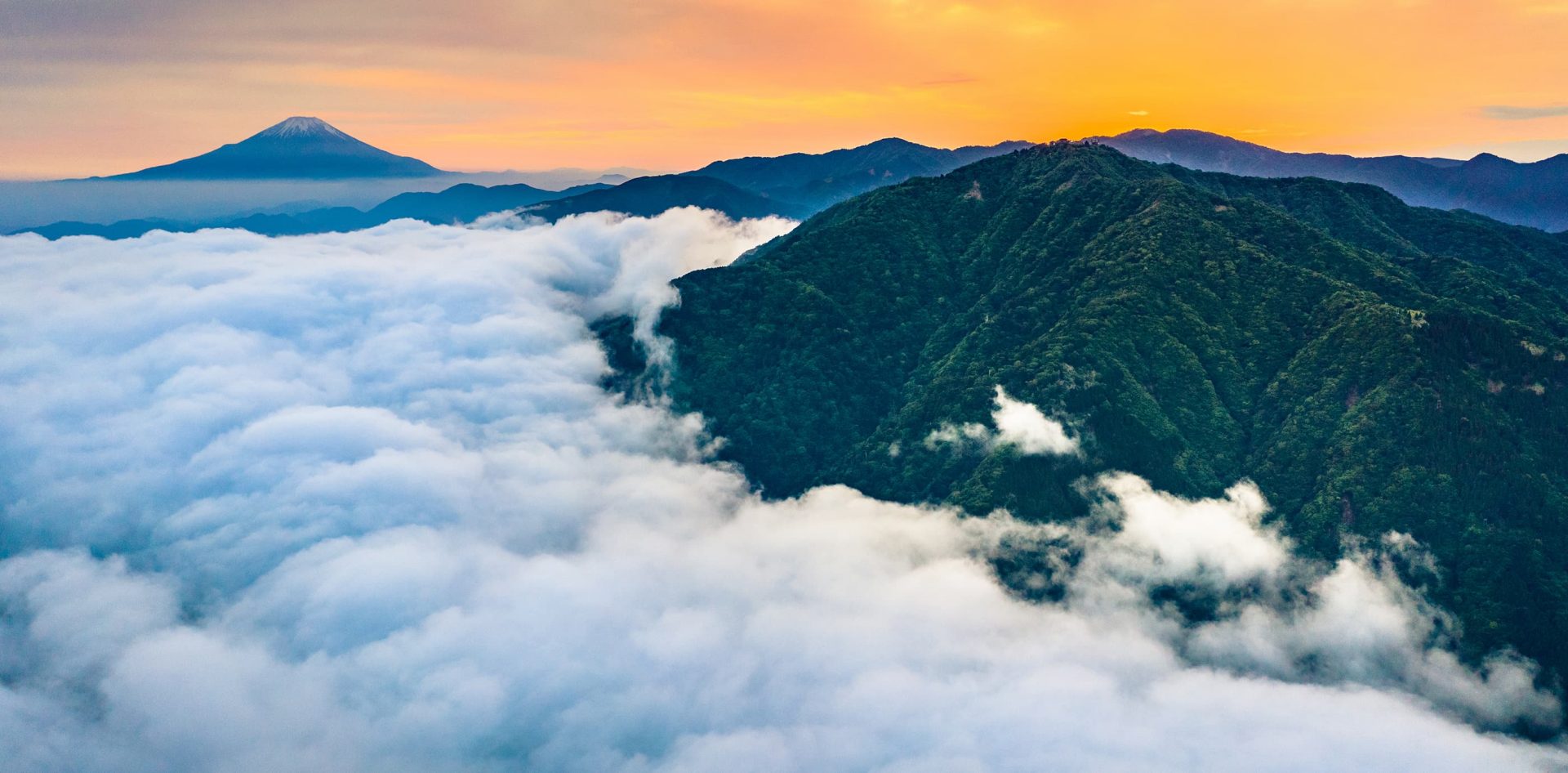
Learn about Oyama Afuri Shrine
Oyama Afuri Shrine, as an ancient shrine protecting the Kanto region, has continued to hear the wishes of the people for more than 2,200 years. Even today, many people visit the shrine and its traditions and culture are passed down from generation to generation.
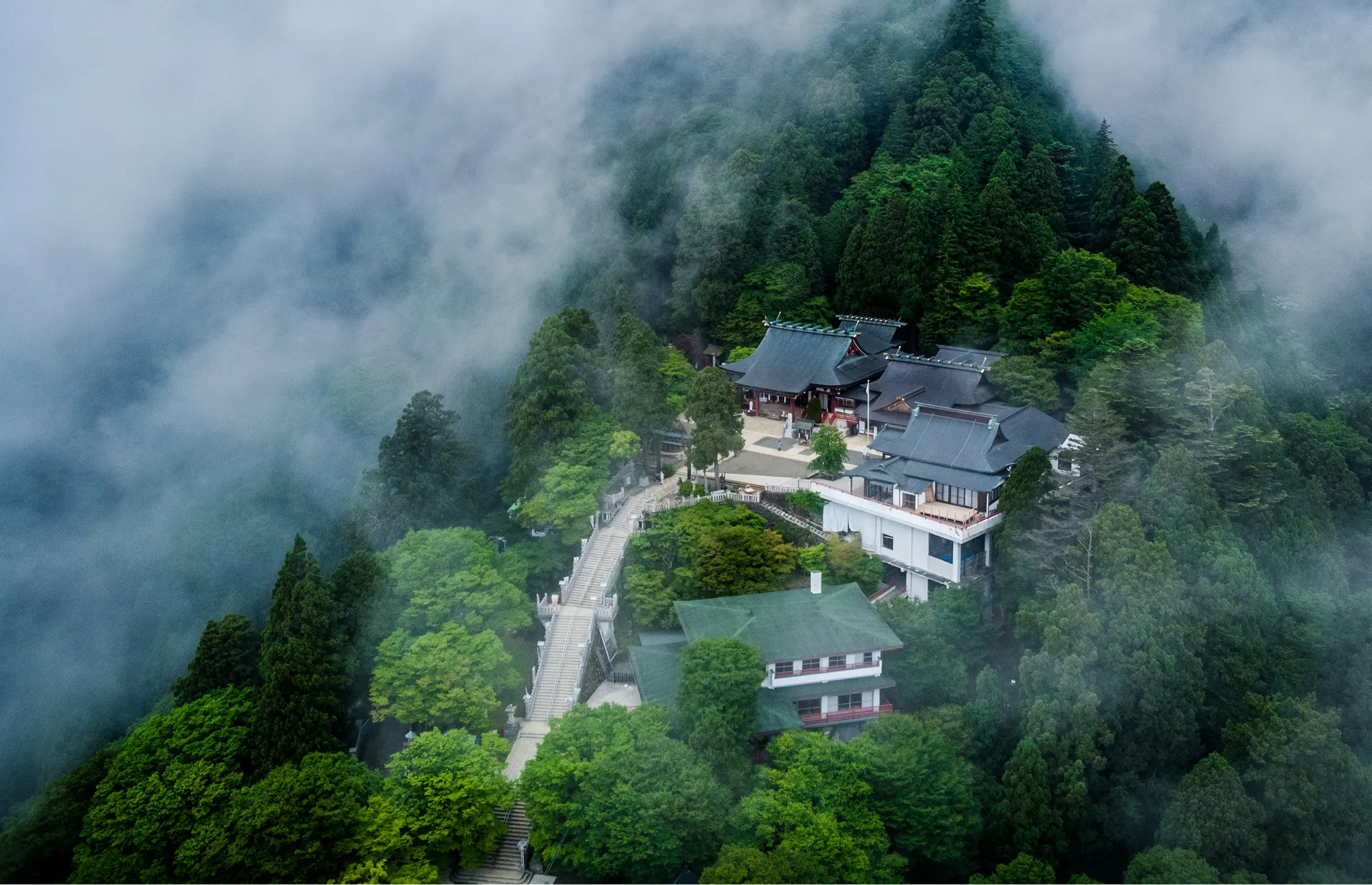
History
Oyama Afuri Shrine is a Shikinai-sha shrine said to have been founded more than 2,200 years ago in the reign of Emperor Sujin. Also known as "Amemuri-yama" since ancient times, the mountain has been a place for praying for rain and a bountiful harvest. Later, after the Nara period, it flourished as a sacred mountain for the syncretization of Shinto and Buddhist teachings, and as a place of prayer for the perpetuation of military fortunes under the samurai government. Since the Edo period, more than 200,000 people a year have made pilgrimages to Mt. Oyama.
Mt. Oyama is also characterized by the birth of many cultures against the backdrop of Oyama pilgrimage, which captured the hearts of the common people. The custom of "Osamedachi", which originated when Minamoto no Yoritomo delivered a sword to the Shrine, is still carried on today. Since the enshrined deity of the Shrine is the father of Mt. Fuji's enshrined deity, Konohanasakuya-hime, the pilgrimage to both Mt. Oyama and Mt. Fuji, “Ryomairi” was also popular.
Thus, Oyama Afuri Shrine has continued to receive all kinds of wishes from people over time. Its traditions and culture continue to be passed down to the present day.
The enshrined deities
- Oyamatsumi
no
Okami - Oyamatsumi no Okami is the father of Konohanasakuya-hime, the enshrined deity of Mt Fuji and worshipped as the god of mountains and water. Since Mt. Oyama served as a compass for ships, he is also worshipped as a god of industry and shipping, and is also known as the "Saketokeno kami" and the ancestral god of sake brewing.
- Takaokami
no
Kami - Takaokami no Kami is a water god mentioned in The Chronicles of Japan (Nihon Shoki). It is said that "Taka" in the Chinese character of his name refers to a mountain, and "Okami" refers to a dragon. Since ancient times, he has been worshipped as a god of rainmaking and rainstopping, and is also called Small Tengu in Mt. Oyama.
- Ooikazuchi
no
Kami - Ooikazuchi no Kami is the god of thunder mentioned in The Chronicles of Japan (Nihon Shoki). Since ancient times, he has been worshipped as a god to ward off fire and theft, and is also called the "Great Tengu" in Mt. Oyama.
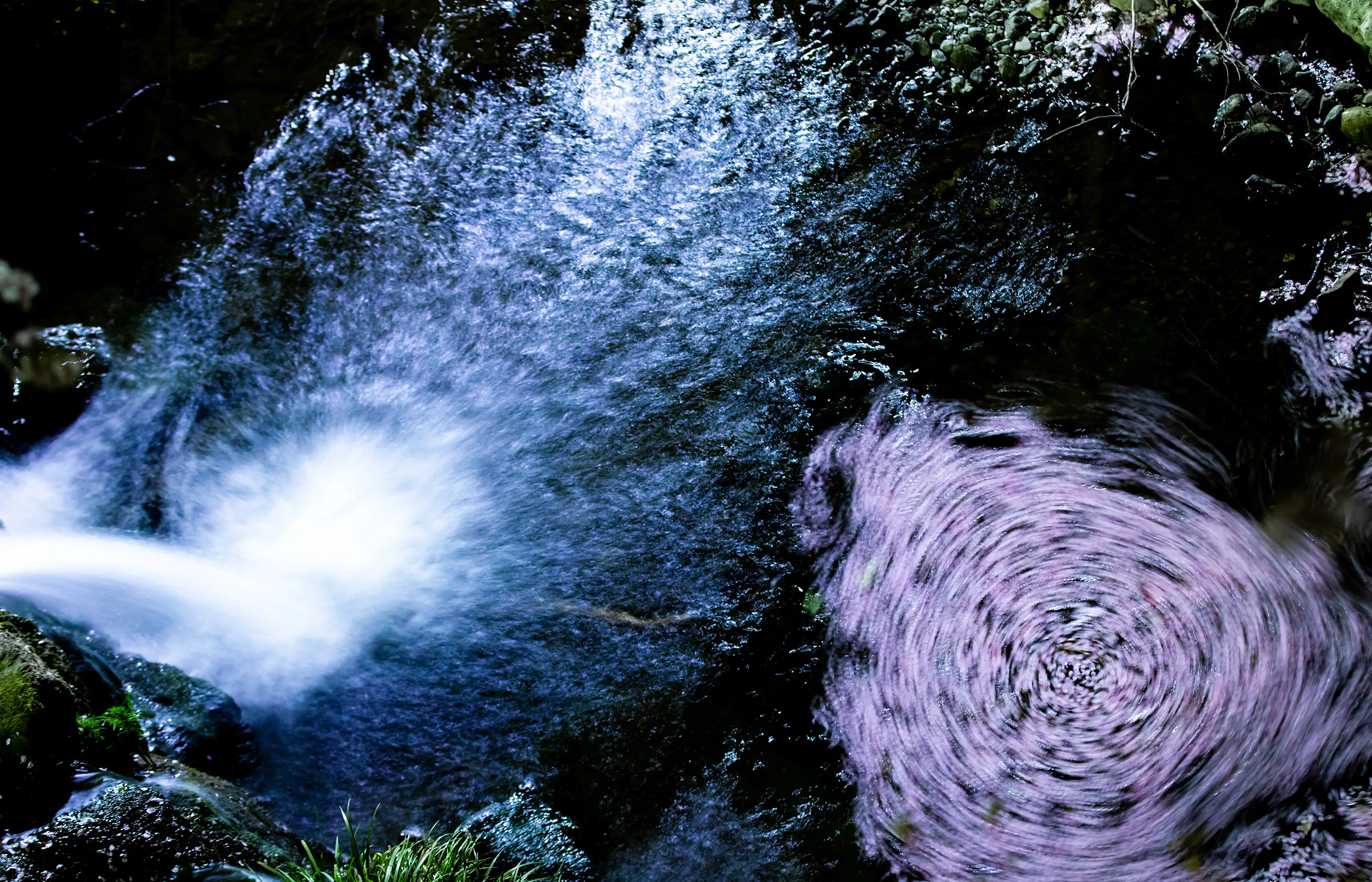
Oyama Pilgrimage
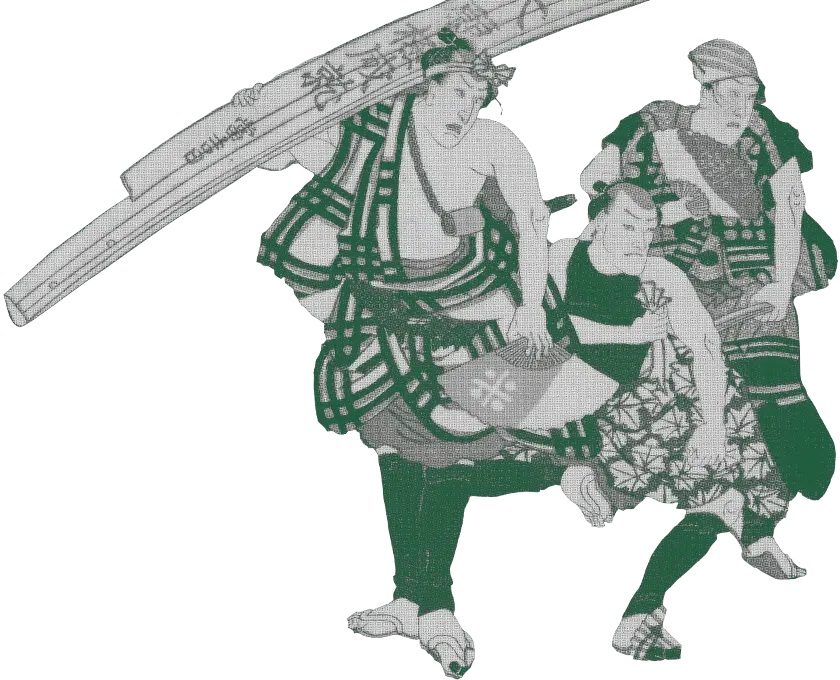 In the Edo period, people organized themselves into "ko" (religious association), worshipped at Oyama, and enjoyed the trip as a form of recreation. This pilgrimage is called " Oyama Pilgrimage," and during the prosperous Edo period, it is recorded that 200,000 people visited the temple annually via a pilgrimage route called "Oyama Kaido" (Oyama Highway). The popularity of the activity was also recounted in classical rakugo stories, and many ukiyoe prints were produced by famous ukiyoe artists. From the lively figures of the people depicted in these works, we can see just how popular Mt. Oyama was. Because of this historical attraction, the "Oyama Pilgrimage" was recognized as a Japanese Heritage Site by the Agency for Cultural Affairs in 2008.
In the Edo period, people organized themselves into "ko" (religious association), worshipped at Oyama, and enjoyed the trip as a form of recreation. This pilgrimage is called " Oyama Pilgrimage," and during the prosperous Edo period, it is recorded that 200,000 people visited the temple annually via a pilgrimage route called "Oyama Kaido" (Oyama Highway). The popularity of the activity was also recounted in classical rakugo stories, and many ukiyoe prints were produced by famous ukiyoe artists. From the lively figures of the people depicted in these works, we can see just how popular Mt. Oyama was. Because of this historical attraction, the "Oyama Pilgrimage" was recognized as a Japanese Heritage Site by the Agency for Cultural Affairs in 2008.
Osamedachi
This unique custom is said to have started in the Edo period when the people imitated an anecdote about Minamoto no Yoritomo, who offered a wooden sword instead of a real one to Mt. Oyama. The longest extant can reach 6 meters.
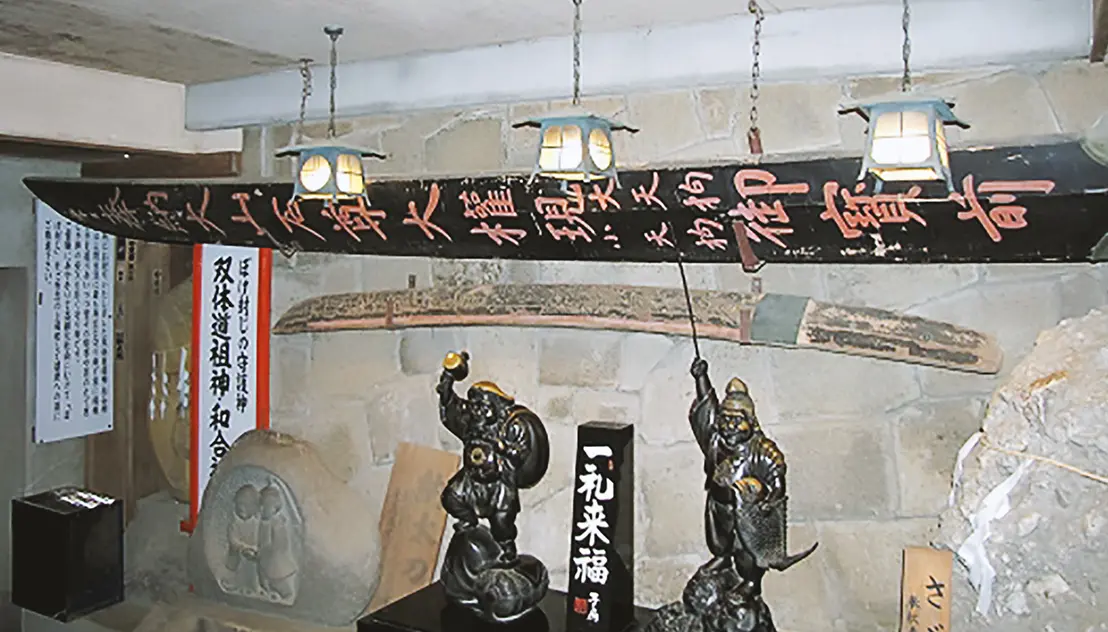
Kagura Dance of
Afuri Shrine
Kagura dance was introduced from Kasuga Taisha Shrine in Nara during the Meiji era. In Mt. Oyama, the Yamato-Mai performed by boys and the Miko (shrine maiden) dance performed by girls are still performed today. The dancers range from elementary school students to adults.
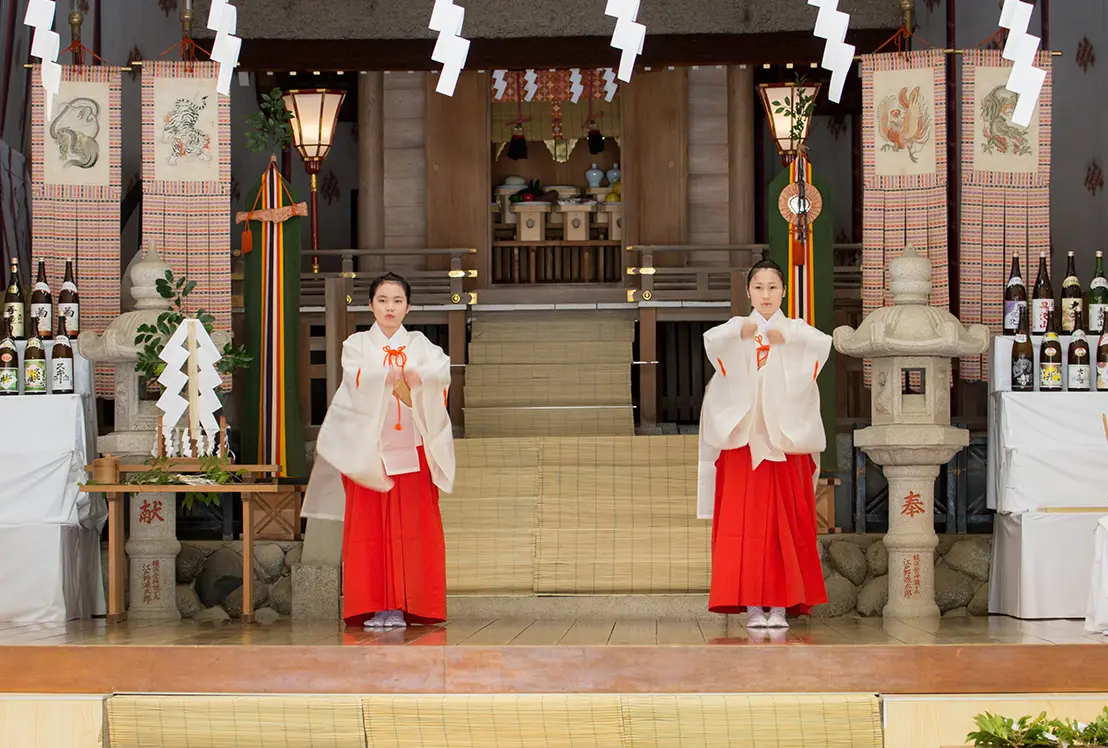
Sendoshi Ryokan
(Shukubo)
Originally, it was an inn for worshippers run by a master called Goshi. In the Meiji era, Goshi was renamed "Sendoshi" and is known as one of the largest shukubo (temple lodging) in Japan. It is now open to the public and can be used not only for lodging but also for meals only.
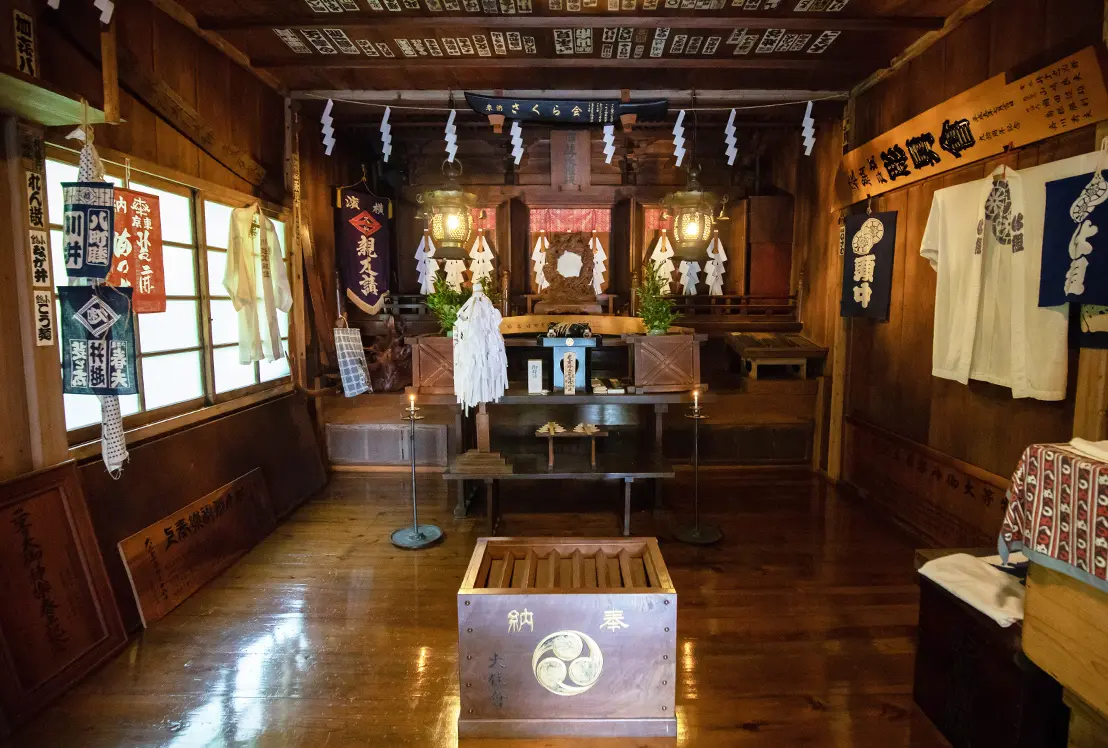
Oyama Noh
A traditional art form that has continued since the Genroku era. It is said that in the past, when the religious leaders of Mt. Oyama were at odds, the Tokugawa Shogunate sent a Kanze school Noh performer to Oyama to mediate between them, and by having them learn and cooperate with the Noh, the people of Mt. Oyama made peace with each other. The Noh mask costumes of those days still remain today.
